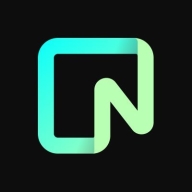

Find out what your peers are saying about Microsoft, Oracle, SAP and others in Relational Databases Tools.
| Product | Market Share (%) |
|---|---|
| SQL Server | 15.5% |
| Neon | 2.1% |
| Other | 82.4% |

| Company Size | Count |
|---|---|
| Small Business | 121 |
| Midsize Enterprise | 58 |
| Large Enterprise | 112 |
Neon is designed to enhance data management and visualization through its advanced capabilities. Its flexibility supports diverse environments, optimizing workflow efficiency for users seeking robust solutions.
Neon offers tailored features that align with industry demands. It facilitates seamless integration with existing systems, ensuring scalability and adaptability. Users benefit from its intuitive design that accelerates project timelines, providing a dependable tool for managing complex datasets and enhancing analytical capabilities.
What features make Neon stand out?In industries like finance and healthcare, Neon is implemented to manage and visualize vast amounts of data effectively. Its adaptability allows it to integrate with industry-specific software, providing solutions for compliance monitoring, fraud detection, and patient data analysis, making it a valuable asset in critical sectors.
SQL Server is a relational database management system (RDBMS) by Microsoft. The product's main purposes are to store data and retrieve it as requested by other software applications - on the same computer or on another computer across a shared network. The solution is built on top of Structured Query Language (SQL), which is a standardized programming language used for relational database management.
The product is tied to Transact-SQL (T-SQL), which is an implementation of SQL from Microsoft that adds several proprietary programming extensions to the standard language. SQL Server is built similarly to other RDBMS products, as its structure is a row-based table that connects related data elements in different tables to one another. One of its most important components is the SQL Server Database Engine, as it controls data processing, storage, and security. Beneath the Database Engine is the SQL Server Operating System, which is used for memory and I/O management, locking data to avoid unneeded upgrades, and job scheduling.
The solution has four editions with different sets of services and tools. They include:
The first two are available for free and are typically utilized by smaller companies, as they work with fewer functions and storage. The second two editions are generally used by bigger organizations and enterprises and offer more features.
The solution has several functions through which users can facilitate different data-related processes. These include:
SQL Server Services
SQL Server has a wide range of add-on services that provide additional benefits beyond database management. These services include:
SQL Server Benefits
The solution has many benefits for users. These include the following:
Reviews from Real Users
A president at a consultancy evaluates SQL Server as a veteran solution with critical log shipping feature.
Harkamal S., a user at a manufacturing company, rates SQL Server with a high mark because it is a stable, scalable, and easy-to-deploy solution that pretty much covers everything.
We monitor all Relational Databases Tools reviews to prevent fraudulent reviews and keep review quality high. We do not post reviews by company employees or direct competitors. We validate each review for authenticity via cross-reference with LinkedIn, and personal follow-up with the reviewer when necessary.